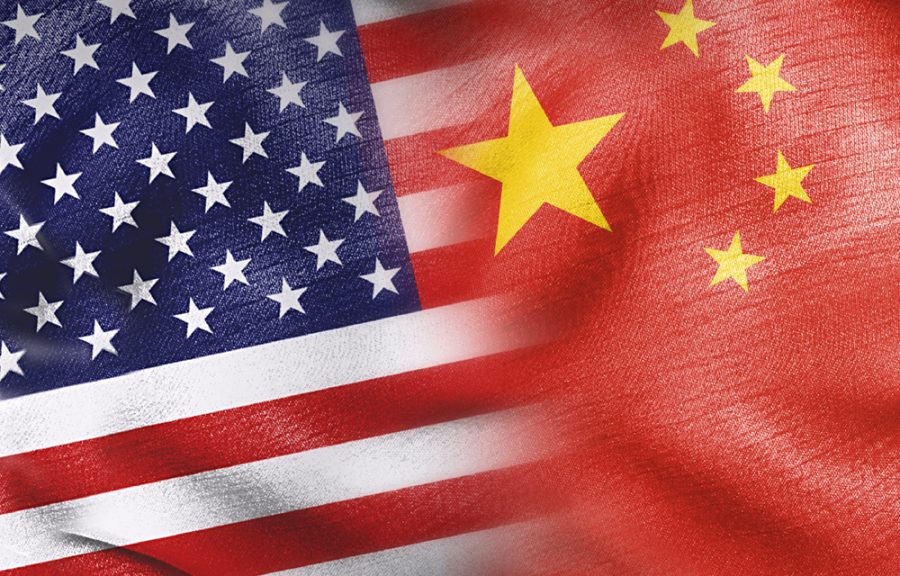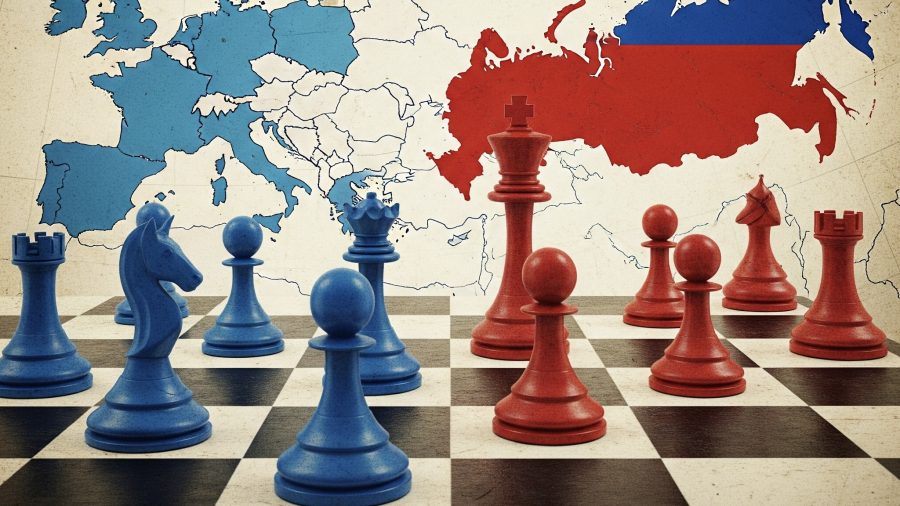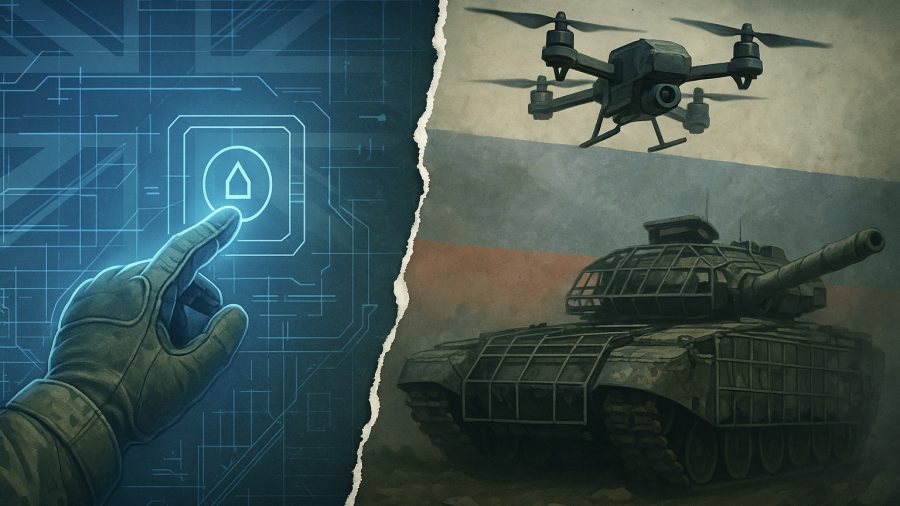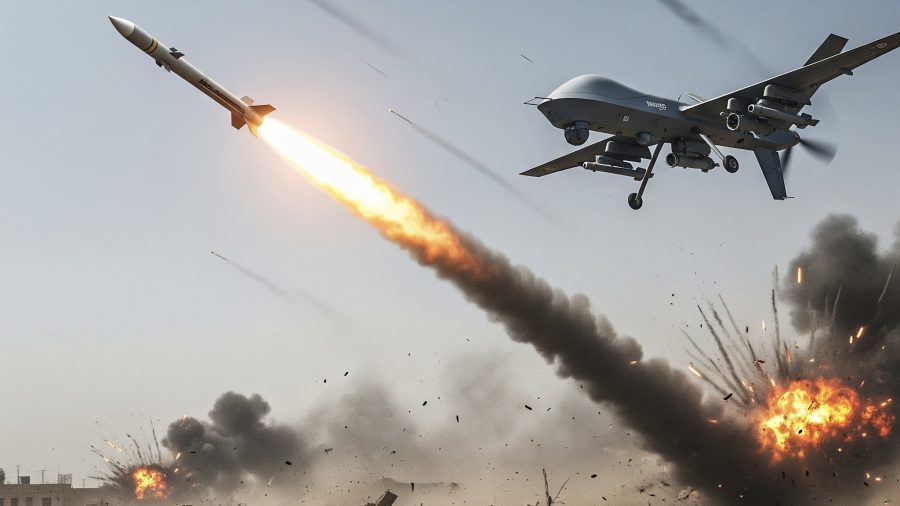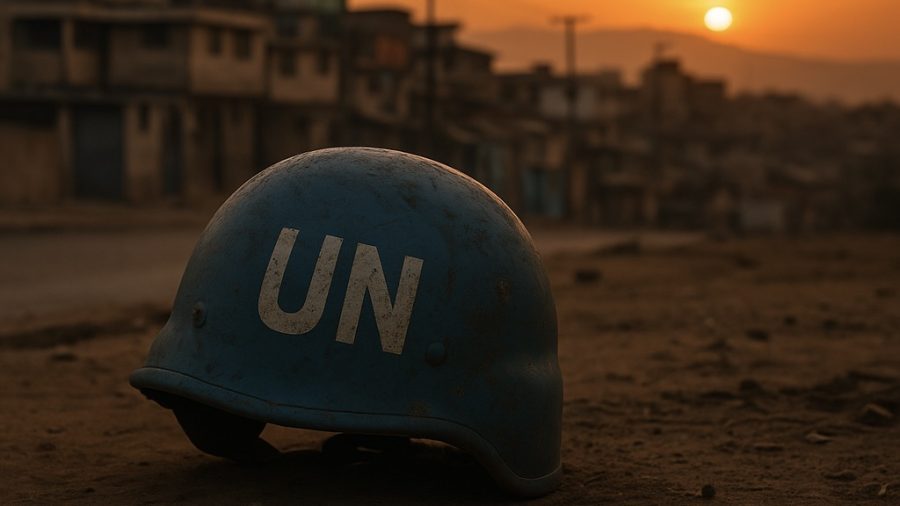The Cuban Missile Crisis of October 1962 is typically remembered as a moment when intelligence succeeded. U-2 imagery revealed Soviet missiles in Cuba before they became operational, preserving enough time for Kennedy to impose a naval quarantine and negotiate withdrawal. Yet this success followed weeks of systematic misjudgement. The British Joint Intelligence Committee assessed Soviet activity as defensive aid well into September, even as evidence accumulated of surface-to-air missile sites and unusual construction. American estimates judged a clandestine medium-range ballistic missile deployment ‘unlikely’ until photographic confirmation forced reassessment.[1] The delay was structural rather than accidental, rooted in cognitive shortcuts, institutional caution, and Cold War identity scripts that limited what analysts considered possible.
These patterns matter because they recur. As Washington and Beijing construct competing narratives about Taiwan, with each framing the other as aggressor, each mobilising resources through vocabularies of threat, intelligence communities operate within similar constraints. The question is whether the structural biases that nearly delayed Western recognition of Soviet missiles in 1962 might delay recognition of Chinese preparations today, and whether belief will accelerate quickly enough to preserve decision time.
How Analysts See What They Expect
The JIC’s reporting in autumn 1962 was shaped by anchoring. In August, as Soviet shipping to Cuba intensified, the JIC judged the activity consistent with defensive arms transfers, a framing that persisted even as evidence accumulated of surface-to-air missile sites.[2] Once an initial hypothesis is formed, analysts interpret subsequent information through that lens in what Heuer termed theory-driven thinking.[3] Analysts also treated the scale of Soviet shipments as unproblematic, dismissing missing economic justification and thereby reinforcing a false coherence in their ‘defensive’ narrative.[4]
These cognitive tendencies continue to operate today. Current assessments of Chinese military activity around Taiwan are filtered through established frameworks about deterrence and Beijing’s presumed rationality. Analysts assume that any move against Taiwan would be telegraphed by large-scale mobilisation. Yet Moscow’s deployment to Cuba was itself a deviation from expected patterns, driven by logics of revolutionary identity and prestige that Western analysts struggled to accommodate.[5]
Chinese decision-making may likewise be guided by normative framings that diverge from Washington’s expectations. Beijing’s emphasis on ‘national rejuvenation’ and ‘reunification’ functions as an identity claim structuring what counts as legitimate behaviour and permissible risk.[6] If analysts anchor on Western deterrence logic, they may discount grey-zone escalation, fait accompli strategies, or calculated acceptance of short-term costs.
How Organisations Slow Belief
The JIC’s organisational form shaped how intelligence was used. As a coordination body dependent on service departments, consensus procedures meant to ensure coherence instead diluted confidence.[7] Within Whitehall’s hierarchy, reports were filtered through multiple clearances before reaching ministers, muting urgency.[8] Intelligence was expected to support existing orientations rather than drive policy, aligning with the government’s desire to avoid escalation.[9]
Contemporary intelligence structures face similar pressures. Political sensitivities around Taiwan create incentives for analytic caution. Assessments challenging prevailing assumptions risk dismissal as alarmist. The result is a ‘belief velocity’ problem, where accurate intelligence exists but moves too slowly through institutional filters to affect decision-making.[10]
This temporal gap proved nearly fatal in 1962. Intelligence moved at three speeds: analytical (fast), institutional (slow), and evidentiary (sudden, when U-2 photography forced reassessment).[11] The Taiwan scenario presents a compressed timeline where grey-zone operations might precede kinetic action by narrow margins. If institutional filters slow recognition as in 1962, decision time could evaporate before intelligence forces reassessment.
How Identity Scripts Limit Imagination
The JIC assumed Soviet behaviour would reflect Western rational calculus, mirroring British self-understanding as a status-quo power and discounting that Moscow might be guided by different logics of revolutionary identity.[12] In the United States, the Monroe Doctrine functioned as a core identity frame, defining the Western Hemisphere as an exclusive sphere and predisposing analysts to treat Soviet deployments as inherently illegitimate.[13]
Today’s rivalry operates through similar identity scripts. The American framing of China as a ‘pacing challenge’ functions as a securitising move, casting competition as existential and mobilising resources. Between May 2023 and March 2024, the Pacific Deterrence Initiative rose from $6.19 billion to $9.86 billion.[14] Beijing’s narrative of ‘great rejuvenation’ operates symmetrically, with Xi Jinping’s October 2022 report binding national modernisation to political authority.[15] By July 2024, a Central Military Commission directive ordered the PLA to ‘dare to fight and win to realise national rejuvenation’,[16] whilst Beijing launched a ¥344 billion semiconductor fund.[17]
These competing mythscapes create a spiral where each side’s defensive posturing is framed by the other as proof of malign intent, mirroring Jervis’s security dilemma.[18] Yet this is not simple misperception but deliberate political construction, converting structural anxiety into material commitments.[19]
For intelligence communities, assessments about Taiwan operate within politically charged frames. Chinese preparations might be read through Beijing’s lens as defensive reunification but appear in Washington as offensive expansionism. Intelligence will be interpreted through pre-existing scripts rather than allowed to challenge them. In 1962, incontrovertible photographic evidence was required to overcome normative assumptions, yet assessments still underestimated Soviet deployments.[20]
Belief Velocity and Decision Time
Intelligence in the Cuban crisis mattered through synchronicity rather than prediction. The combination of U-2 imagery and Oleg Penkovsky’s provision of R-12 missile manuals provided both confirmation and temporal calibration.[21] Richard Helms said the intelligence bought Kennedy ‘three extra days’, enabling measured response.[22]
Had discovery come only after missiles were operational, Washington’s choice set would have narrowed to a strike or acceptance. Had evidence arrived earlier, the Soviet leadership might have reacted less flexibly. Both scenarios pivot on timing of belief.[23]
This temporal dimension is critical for Taiwan. Chinese preparation would unfold across multiple domains with different observational signatures and lead times. Intelligence must integrate technical collection with political assessment fast enough to preserve decision time, yet the same institutional filters that delayed recognition in 1962 remain operative.
Post-crisis reforms tightened coordination and introduced clearer confidence statements, whilst satellite imagery gained priority.[24] Yet reforms could not resolve the tension that intelligence operates as political activity within political institutions.[25] Contemporary debates might benefit from recognising this constraint: improving tradecraft matters, but if institutional cultures reward consensus, systematic conservatism will persist.
Implications for Taiwan
Three implications emerge. First, analysts must guard against anchoring on assumptions about Chinese rationality or gradualism. Beijing’s decision calculus may be structured by normative commitments to ‘reunification’ that diverge from Western deterrence logic, requiring institutional capacity to question foundational assumptions.
Second, organisational structures must accelerate belief velocity by reducing institutional filters, creating direct channels for urgent assessments, and rewarding analysts who flag outlier scenarios. The Cuban crisis showed that consensus procedures can dilute warnings until events force reassessment. Taiwan’s compressed timeline may not afford that luxury.
Third, intelligence communities must recognise they operate within politically charged normative frames. The competing mythscapes of ‘pacing challenge’ and ‘great rejuvenation’ structure what seems imaginable, influencing which indicators receive attention. Intelligence cannot escape these frames but can work to make them explicit, flagging when assessments reflect identity scripts rather than evidence alone.
The Cuban Missile Crisis succeeded because intelligence preserved enough time for diplomacy, yet that success followed weeks of near-failure when cognitive shortcuts, institutional caution, and normative assumptions nearly foreclosed recognition. The structural biases that shaped 1962 remain operative. Whether intelligence about Taiwan will move fast enough depends on whether institutions can overcome the same filters that nearly delayed belief in October 1962.
Bibliography
Aldrich, Richard J., Rory Cormac, and Michael S. Goodman. Spying on the World: The Declassified Documents of the Joint Intelligence Committee, 1936–2013. Edinburgh: Edinburgh University Press, 2014.
Allison, Graham T., and Philip Zelikow. Essence of Decision: Explaining the Cuban Missile Crisis. 2nd ed. New York: Longman, 1999.
Bell, Duncan S. A. “Mythscapes: Memory, Mythology, and National Identity.” British Journal of Sociology 54, no. 1 (March 2003): 63–81.
Blight, James G., and David A. Welch. “What Can Intelligence Tell Us about the Cuban Missile Crisis, and What Can the Cuban Missile Crisis Tell Us about Intelligence?” Intelligence and National Security 13, no. 3 (1998): 1–17.
Buzan, Barry, Ole Wæver, and Jaap de Wilde. Security: A New Framework for Analysis. Boulder, CO: Lynne Rienner, 1998.
Central Military Commission. Decision on Deeply Advancing Political Training (中央军委印发《关于全面贯彻新时代政治建军方略深入推进军队政治整训的决定》). 10 July 2024. Accessed July 20, 2025. https://www.spp.gov.cn/spp/tt/202407/t20240710_660046.shtml.
Fischer, Beth A. “Perception, Intelligence Errors, and the Cuban Missile Crisis.” Intelligence and National Security 13, no. 3 (1998): 150–72.
Garthoff, Raymond L. “US Intelligence in the Cuban Missile Crisis.” Intelligence and National Security 13, no. 3 (1998): 18–63.
Herman, Michael. Intelligence Power in Peace and War. Cambridge: Cambridge University Press, 1996.
Heuer, Richards J. Psychology of Intelligence Analysis. Washington, DC: CIA, 2021.
Hulnick, Arthur S. “What’s Wrong with the Intelligence Cycle.” Intelligence and National Security 21, no. 6 (2006): 959–79.
Jervis, Robert. Perception and Misperception in International Politics. New Edition. Princeton, NJ: Princeton University Press, 1976.
Reuters. “China Establishes Third Phase of National Integrated Circuit Investment Fund with $47.5 Billion.” May 27, 2024. Accessed August 11, 2025. https://www.business-standard.com/world-news/china-sets-up-third-fund-with-47-5-bn-to-boost-semiconductor-industry-124052700493_1.html.
Scott, Len. “Oleg Penkovsky, British Intelligence, and the Cuban Missile Crisis.” In Learning from the Secret Past: Cases in British Intelligence History, edited by Robert Dover and Michael S. Goodman, 226–48. Washington, DC: Georgetown University Press, 2011.
Scott, L. V. Macmillan, Kennedy and the Cuban Missile Crisis: Political, Military and Intelligence Aspects. Basingstoke: Palgrave Macmillan, 1999.
Standing Committee of the National People’s Congress. Patriotic Education Law of the People’s Republic of China (中华人民共和国爱国主义教育法). Adopted October 24, 2023; effective January 1, 2024. Accessed July 20, 2025. http://www.npc.gov.cn/npc/c2/c30834/202310/t20231024_432535.html.
U.S. Department of Defense, Office of the Under Secretary of Defense (Comptroller). Pacific Deterrence Initiative: FY 2025 Budget Justification. Washington, DC: Department of Defense, March 2024. Accessed July 22, 2025. https://comptroller.defense.gov/Portals/45/Documents/defbudget/FY2025/FY2025_Pacific_Deterrence_Initiative.pdf.
Wæver, Ole. “Securitization and Desecuritization.” In On Security, edited by Ronnie D. Lipschutz, 46–86. New York: Columbia University Press, 1995.
Weldes, Jutta. Constructing National Interests: The United States and the Cuban Missile Crisis. Minneapolis: University of Minnesota Press, 1999.
Xi Jinping. “全面建设社会主义现代化国家 全面推进中华民族伟大复兴——在中国共产党第二十次全国代表大会上的报告” [Report to the 20th CPC National Congress]. People’s Daily, 4 January 2023. Accessed July 20, 2025. https://www.gov.cn/xinwen/2022-10/25/content_5721685.htm.
[1]: Raymond L. Garthoff, “US Intelligence in the Cuban Missile Crisis,” Intelligence and National Security 13, no. 3 (1998): 20–22.
[2]: Richard J. Aldrich, Rory Cormac, and Michael S. Goodman, Spying on the World: The Declassified Documents of the Joint Intelligence Committee, 1936–2013 (Edinburgh: Edinburgh University Press, 2014), 249–52.
[3]: Richards J. Heuer, Psychology of Intelligence Analysis (Washington, DC: CIA, 2021), 91–92.
[4]: Ibid., 96–99.
[5]: Beth A. Fischer, “Perception, Intelligence Errors, and the Cuban Missile Crisis,” Intelligence and National Security 13, no. 3 (1998): 152–53.
[6]: Fischer, “Perception, Intelligence Errors,” 153.
[7]: Jutta Weldes, Constructing National Interests: The United States and the Cuban Missile Crisis (Minneapolis: University of Minnesota Press, 1999), 30–35, 224–39.
[8]: Duncan S. A. Bell, “Mythscapes: Memory, Mythology, and National Identity,” British Journal of Sociology 54, no. 1 (March 2003): 74.
[9]: Arthur S. Hulnick, “What’s Wrong with the Intelligence Cycle,” Intelligence and National Security 21, no. 6 (2006): 959–63.
[10]: Aldrich et al., Spying on the World, 252–54.
[11]: Hulnick, “What’s Wrong with the Intelligence Cycle,” 959–63.
[12]: Aldrich et al., Spying on the World, 252–54.
[13]: Philip H. J. Davies, MI6 and the Machinery of Spying (London: Frank Cass, 2004), 77–80.
[14]: Aldrich et al., Spying on the World, 10–23.
[15]: Hulnick, “What’s Wrong with the Intelligence Cycle,” 961–62.
[16]: This concept draws on Heuer’s account of how vivid evidence overcomes analytic inertia. Heuer, Psychology of Intelligence Analysis, 91–97.
[17]: James G. Blight and David A. Welch, “What Can Intelligence Tell Us about the Cuban Missile Crisis, and What Can the Cuban Missile Crisis Tell Us about Intelligence?” Intelligence and National Security 13, no. 3 (1998): 1–3.
[18]: Heuer, Psychology of Intelligence Analysis, 91–97.
[19]: Fischer, “Perception, Intelligence Errors,” 153.
[20]: Weldes, Constructing National Interests, 30–35, 224–39.
[21]: Aldrich et al., Spying on the World, 251–54.
[22]: Ole Wæver, “Securitization and Desecuritization,” in On Security, ed. Ronnie D. Lipschutz (New York: Columbia University Press, 1995), 54–55.
[23]: U.S. Department of Defense, Office of the Under Secretary of Defense (Comptroller), Pacific Deterrence Initiative: FY 2025 Budget Justification (Washington, DC: Department of Defense, March 2024), 3.
[24]: Xi Jinping, “全面建设社会主义现代化国家 全面推进中华民族伟大复兴——在中国共产党第二十次全国代表大会上的报告” [Report to the 20th CPC National Congress], People’s Daily, 4 January 2023, 1.
[25]: Central Military Commission, Decision on Deeply Advancing Political Training (10 July 2024), art. 2.


